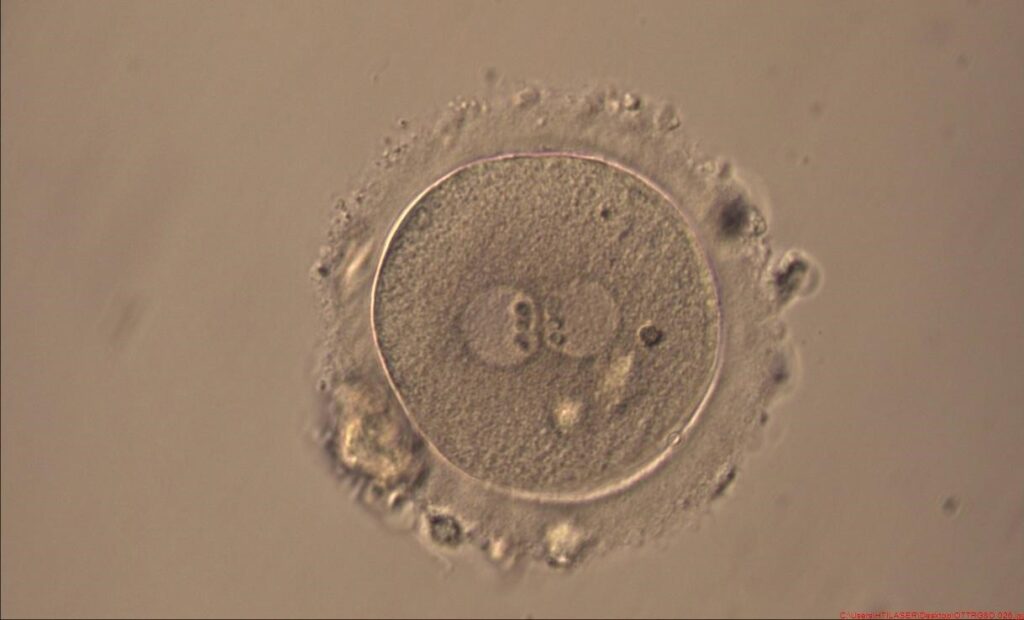Assessing Fertilization in the IVF Lab

What We Look for and Why It Matters
Roughly 16-20 hours after insemination, we assess fertilization to determine if an egg has successfully combined with sperm. This early evaluation is crucial, as it sets the stage for embryo development.
What Are We Looking For?
When we check for fertilization, we look for two key structures inside the egg:
- Two Pronuclei (2PN) – These contain the genetic material (DNA) from both the egg and sperm. They eventually fuse to form the embryo’s nucleus, which provides the blueprint for all future cells.
- Two Polar Bodies (2PB) – These are byproducts of egg maturation and fertilization, confirming the completion of key developmental steps.

A normally fertilized egg will display both 2PN and 2PB, indicating a healthy start to embryo development.
Common Fertilization Variations
Not all eggs display a typical 2PN structure. Here are some variations we might see:
0PN (No Pronuclei Visible) – This could mean fertilization did not occur, or that the pronuclei faded too soon. Some labs continue culturing these embryos separately, as a small percentage may still develop and lead to healthy pregnancies.
1PN (One Pronucleus Present) – This suggests a missing pronucleus from either the egg or sperm, making the embryo haploid. While some 1PN embryos have resulted in live births, they carry a higher risk of genetic abnormalities, so PGT (preimplantation genetic testing) is recommended.
3PN (Three Pronuclei Present) – This indicates an extra set of DNA, leading to triploidy, a condition incompatible with life. These embryos are typically discarded, though some labs may observe them further with PGT screening.
Atretic or Degenerate Eggs/Embryos – These are nonviable and do not progress in development.
Other Abnormalities – Embryos showing more than two pronuclei or unusual cleavage patterns (e.g., multiple cells at fertilization check) may still be monitored, but PGT is strongly recommended due to the high likelihood of genetic abnormalities.

Why This Step Matters
Fertilization assessment is a critical checkpoint in the IVF process. By identifying normally fertilized embryos early on, we can select the best candidates for further culture, increasing the chances of a successful pregnancy.
“Every IVF journey is unique, and fertilization assessment helps us tailor the best approach for each patient. If you’re undergoing IVF and have questions about your fertilization results, don’t hesitate to reach out—we’re here to guide you through every step of the process.”

